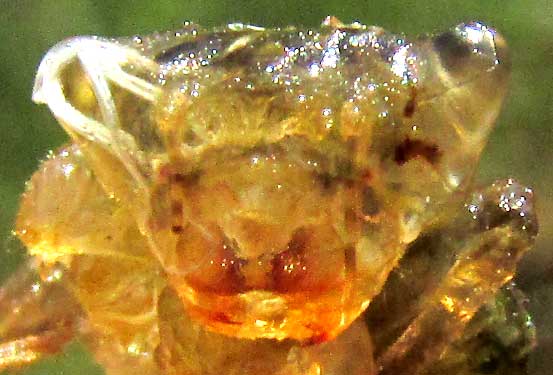Excerpts from Jim Conrad's
Naturalist Newsletter
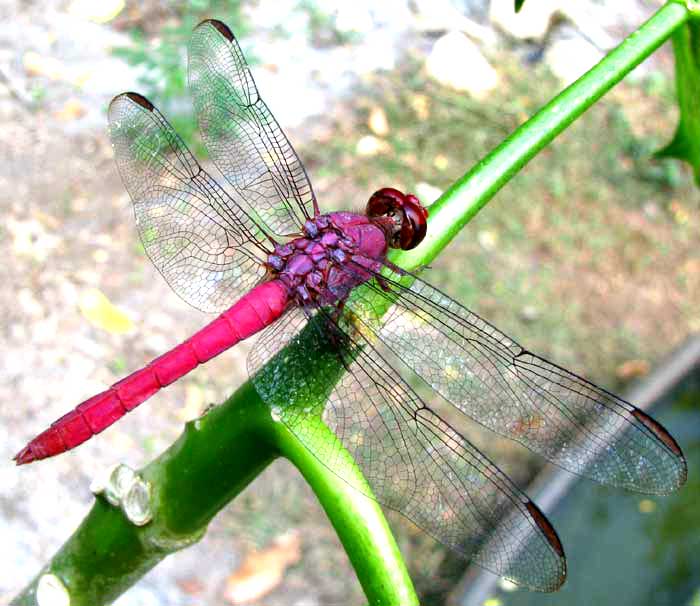
from the November 28, 2010 Newsletter issued from Hacienda Chichen Resort beside Chichén Itzá Ruins, central Yucatán, MÉXICO; limestone bedrock, elevation ~39m (~128ft), ~N20.676°, ~W88.569°
CARMINE SKIMMER
With the dry season's arrival, I've put in front of the hut a black plastic trough about three by two feet along its sides and half a foot deep, placed a big limestone rock in its center, and filled the trough with water. The very first and most frequently returning critter to visit was the dragonfly shown above.
In that picture notice the black trough right below. In dry-season Yucatan where the only standing water is in sinkhole, or cenote, bottoms, this dragonfly is very attached to the trough's little pond!
Bea and I together pegged this as the Carmine Skimmer, ORTHEMIS DISCOLOR, a very widely distributed species occurring from Texas and the Caribbean all the way south to Uruguay in South America. Apparently in the US there's a similar species, the Roseate Skimmer, Orthemis ferruginea, from which we distinguished it by minor differences in the wing venation. In dragonfly identification, wing venation is the thing.
issued July 20, 2019 from near the forest just west of Tepakán; elev. ~9m (~30 ft), N21.053°, W89.052°; north-central Yucatán state, MÉXICO
CARMINE SKIMMER FROM BELOW
A Carmine Skimmer sometimes perches on the clothesline over the outside kitchen's concrete floor, shown below offering a particularly good view of the wings' venation.
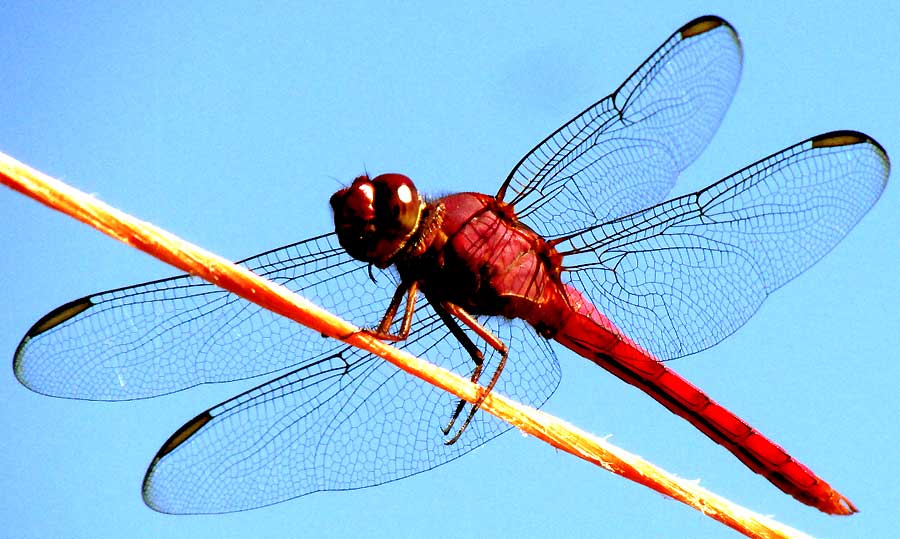
issued January 6, 2020 from the forest just west of Tepakán; elev. ~9m (~30 ft), N21.053°, W89.052°; north-central Yucatán state, MÉXICO
CARMINE SKIMMER NYMPH?
In the outside kitchen's handleless pan where I keep algae and all kinds of small aquatic animals, several dragonfly nymphs of different ages have turned up. One is shown below:
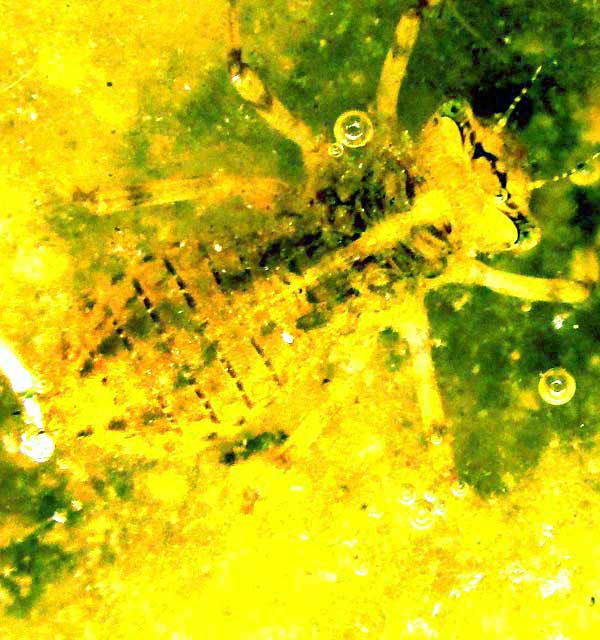
Only one dragonfly species visits the kitchen regularly, the Carmine Skimmer, so the best bet was that our nymph was of that species. Despite the large distribution area of the species, which includes Texas in the north, the only Carmine Skimmer nymph pictures I could find on the Internet were at the BugGuide.net site. It was from Texas, and the experts weren't sure about the identification. What's shown looks like our pan species, but probably many species have nymphs more or less like ours. Still, the Texas experts made a big deal about their nymph's compound eyes, which are a bit "pointy," apparently a feature of the genus Orthemis to which Carmine Skimmers belong. A close-up of the head of our pan nymph shows compound eyes about as pointy as those at Bugguide:
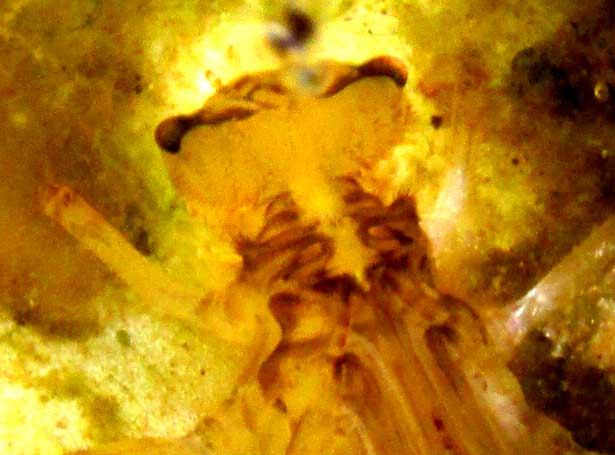
You might enjoy comparing those compound eyes with those of a nymph of another dragonfly species we documented earlier in Texas. The abandoned exoskeleton, or exuvia, of a metamorphosed pan nymph is shown below:
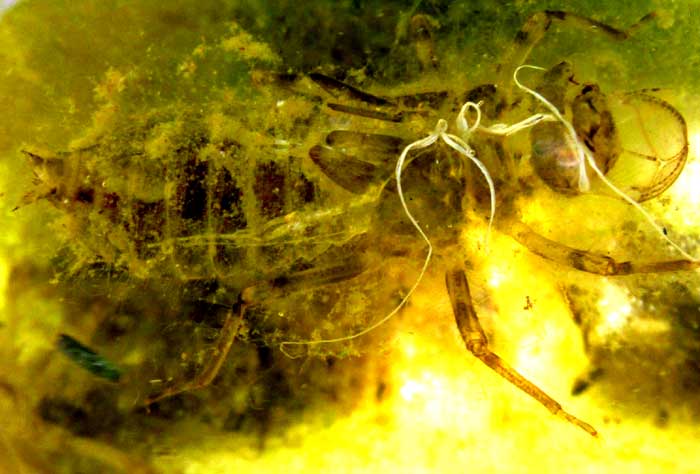
I've read that the white threads are the left behind linings of the tracheae, the simple tubes that make up the cicada's respiratory system. A close-up of that exuvia's head is shown below:
